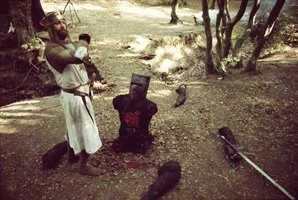You don't need a huge programming background to get started with Twine, but there are a couple of things you should know. First, Twine exports to a custom html page that the story passage runs on. You'll need to be able to upload and link to custom pages to use it. Second, Twine uses a scripting language called Harlowe. If you've used a scripting language before, it's pretty easy to get into Harlowe. If you haven't, it'll take a little extra work. Here's a link to a manual on the Harlow language for reference. If you've got those two things down, you've got everything you need to be successful with Twine.
The first step in getting started with Twine is downloading it here. For my project, I used Twine 2, the latest version available at the time. There are download links at the top right of the page. Click the appropriate link for your operating system and open the downloaded file.
 |
| Twine Download Link |
 |
| Twine Starting Page |
Once you've finished up the story, you can export it to html, by clicking the menu button in the bottom left and selecting publish to file. You'll then be given a dialog box to save the html page.
 |
| Publish Story |
That's all there is to it. Of course, this is a very light intro to Twine, and I didn't go into detail on everything. There is a more detailed guide to getting started with Twine here. That should help fill in most of the gaps as you go. Really, the best thing you can do is jump in and go for it.

